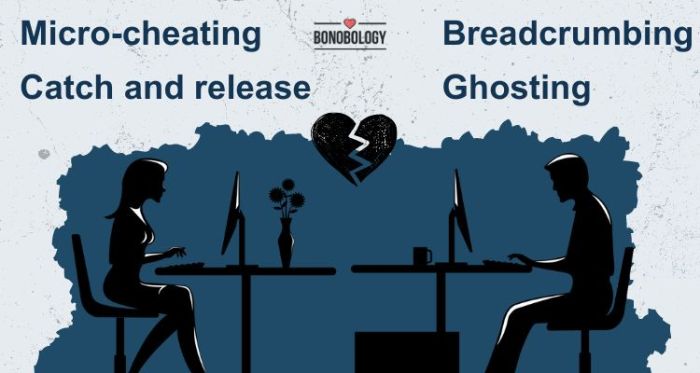Navigating the American dating scene today is a far cry from the courtship rituals of previous generations. The rise of dating apps, the pervasive influence of social media, and the ever-evolving expectations surrounding relationships have fundamentally reshaped how singles connect, interact, and build romantic partnerships. This exploration delves into the complexities of modern dating in the US, examining its challenges, opportunities, and the ever-increasing need for inclusivity and respect.
From the swipe-right culture of online platforms to the subtle nuances of navigating initial encounters in the digital age, we'll uncover the unique dynamics that define modern relationships. We'll analyze the impact of technology on communication, explore the anxieties and frustrations many singles experience, and offer practical strategies for fostering healthy and fulfilling connections in this evolving landscape. This isn't just about finding a partner; it's about understanding the cultural shifts shaping the search for love in the 21st century.
The Changing Landscape of Relationships

Source: goodmenproject.com
Evolution of Dating Norms
The shift from traditional dating norms to modern practices is significant. Two decades ago, meeting potential partners primarily involved social circles, blind dates arranged by friends or family, and chance encounters. Public spaces like bars, clubs, and community events served as common meeting grounds. Dating typically followed a more structured progression, often involving courtship and formal introductions before physical intimacy. Today, the process is significantly less formalized and more fluid, reflecting a greater emphasis on individual autonomy and self-expression. The rise of online dating has significantly altered the traditional pathways to relationship formation.Traditional Dating versus Modern Dating Apps
Traditional dating methods, while offering opportunities for organic connections and the development of deeper relationships through shared experiences, often lacked efficiency and geographic limitations. Finding compatible partners required significant time and effort, relying heavily on chance and social networks. Modern dating apps and online platforms, conversely, offer a vast pool of potential partners, overcoming geographical barriers and enabling users to filter matches based on specific preferences and criteria. However, this convenience comes at the cost of potentially superficial interactions and a greater emphasis on visual profiles over genuine connection. The curated nature of online profiles can also lead to misrepresentation and unrealistic expectations.Impact of Social Media on Modern Dating Dynamics
Social media platforms have profoundly impacted modern dating dynamics. They provide a constant stream of information about potential partners, often blurring the lines between public and private life. Social media profiles offer a glimpse into individuals' personalities, interests, and social circles, influencing initial attraction and compatibility assessments. However, this constant exposure can also lead to increased social comparison, heightened anxieties, and a pressure to present an idealized version of oneself. The ease of communication through social media can accelerate the pace of dating, potentially leading to rushed decisions and a lack of in-depth connection before meeting in person. Furthermore, the prevalence of online harassment and catfishing adds another layer of complexity to the landscape.The Role of Technology in Shaping Modern Relationships
Technology's role in shaping modern relationships extends beyond dating apps. Video calls, messaging platforms, and social media facilitate communication and relationship maintenance across distances. These tools enable couples to stay connected despite geographical separation, fostering intimacy and shared experiences even when physically apart. However, the constant connectivity can also blur the boundaries between personal and professional life, leading to relationship fatigue and a lack of personal space. The reliance on technology for communication can also hinder the development of essential non-verbal communication skills and the ability to navigate conflict effectively in person.Online Dating versus Meeting in Person
| Method | Pros | Cons | Prevalence |
|---|---|---|---|
| Online Dating | Wider pool of potential partners, overcomes geographical limitations, allows for filtering based on preferences | Potential for superficial interactions, misrepresentation, catfishing, unrealistic expectations | High; increasingly dominant method for meeting romantic partners |
| Meeting in Person | Organic connections, opportunity for genuine interaction, development of deeper relationships through shared experiences | Limited pool of potential partners, geographic limitations, requires more time and effort | Decreasing; still relevant, particularly for individuals seeking long-term commitment |
Challenges and Opportunities in Modern Dating

Source: bonobology.com
Prevalent Challenges in Modern Dating
The modern dating scene is characterized by a range of challenges. Competition is fierce, with a vast pool of potential partners accessible through various online platforms. This abundance of choice can paradoxically lead to decision paralysis and a sense of overwhelm. Furthermore, the anonymity afforded by online dating can contribute to superficial interactions and a lack of genuine connection. The pressure to present a curated, idealized version of oneself online can also lead to feelings of inadequacy and anxiety. Finally, the prevalence of "ghosting" and other forms of disrespectful behavior adds to the emotional toll of modern dating. These challenges highlight the need for thoughtful strategies and a resilient approach.Frustrations and Anxieties Associated with Online Dating
Online dating, while offering convenience, often generates unique frustrations and anxieties. The constant stream of messages, profiles, and notifications can be overwhelming and time-consuming. Many users experience rejection frequently, leading to feelings of self-doubt and disappointment. Concerns about safety and security, including catfishing and scams, are also prevalent. Furthermore, the pressure to maintain an engaging online persona can be exhausting and detract from the authenticity of the interaction. These anxieties underscore the importance of setting realistic expectations and prioritizing self-care while navigating the online dating worldStrategies for Building Healthy Relationships in a Digital Age
Building healthy relationships in the digital age requires a mindful and strategic approach. Prioritizing genuine connection over superficial interactions is crucial. This means focusing on meaningful communication, actively listening, and showing genuine interest in the other person's life and experiences. It is also essential to maintain healthy boundaries, both online and offline, and to be respectful of others' time and emotions. Cultivating self-awareness and managing expectations are vital components of building strong relationships. Remember that a healthy relationship is built on mutual respect, trust, and open communication.Successful Approaches to Online Dating and Relationship Building
Successful online dating often involves a proactive and selective approach. Creating a genuine and accurate profile that reflects your personality and interests is crucial. Engaging in thoughtful communication, initiating conversations, and asking insightful questions can help establish meaningful connections. Being selective in choosing potential partners based on shared values and compatibility is also important. Finally, transitioning from online interactions to in-person meetings in safe and public settings is key to fostering a genuine connection. Examples of successful approaches include focusing on quality over quantity, being authentic in self-presentation, and prioritizing compatibility over superficial attraction. For instance, a person focusing on shared hobbies might find success by joining online groups related to their interests and connecting with like-minded individuals.Tips for Maintaining Healthy Communication and Boundaries in Modern Relationships
Effective communication and clear boundaries are fundamental to healthy relationships.- Practice active listening: Pay attention to your partner's words and emotions, and respond thoughtfully.
- Express your needs and feelings clearly and respectfully: Avoid passive-aggressive communication.
- Establish healthy boundaries: Define what you are and are not comfortable with, and communicate those boundaries clearly.
- Respect your partner's boundaries: Recognize and honor their limits and preferences.
- Engage in regular check-ins: Discuss your relationship's progress, challenges, and needs openly and honestly.
- Practice empathy and understanding: Attempt to see things from your partner's perspective.
- Seek professional help when needed: Don't hesitate to seek guidance from a therapist or counselor if you encounter difficulties.
Diversity and Inclusivity in Modern Dating
The US dating landscape is increasingly diverse, reflecting the nation's multifaceted population. However, this diversity isn't always equally represented or experienced, leading to disparities in dating success and satisfaction across different demographic groups. Understanding these differences is crucial for fostering a more inclusive and equitable dating environment. This section will analyze the representation of diverse demographics in US dating, compare dating experiences across various groups, and explore the impact of cultural backgrounds on dating preferences and expectations. Finally, it will propose a hypothetical inclusivity campaign and demonstrate how to craft an inclusive online dating profile.Representation of Diverse Demographics in US Dating
Studies show that online dating platforms, while offering broader reach, often still reflect existing societal biases. For instance, certain racial or ethnic groups may be disproportionately represented or receive fewer matches compared to others. Socioeconomic disparities also play a role, with access to premium features or dating apps themselves being a factor in participation and success. Data from various dating apps and sociological studies consistently reveal these imbalances, highlighting the need for greater awareness and intervention. These imbalances aren't simply about numbers; they reflect underlying societal biases and prejudices that permeate the online dating experience.Comparison of Dating Experiences Across Different Groups
Dating experiences vary significantly across racial, ethnic, and socioeconomic groups. Individuals from marginalized communities may encounter more instances of prejudice, fetishization, or microaggressions. For example, research suggests that Black women often report receiving fewer messages or experiencing more rejection on dating apps compared to white women. Similarly, individuals from lower socioeconomic backgrounds may face challenges related to dating costs, access to technology, or perceived social status. These differences highlight the need for a more nuanced understanding of how systemic inequalities impact the dating experiences of diverse populations.Impact of Cultural Backgrounds on Dating Preferences and Expectations
Cultural backgrounds profoundly shape dating preferences and expectations. For instance, family involvement in the dating process, expectations regarding gender roles, or communication styles can vary considerably across cultures. These differences can lead to misunderstandings or conflicts if not acknowledged and respected. Understanding these cultural nuances is essential for navigating intercultural relationships and promoting inclusivity. Failure to do so can result in misinterpretations and unsuccessful relationships, further highlighting the importance of cultural sensitivity in modern dating.Hypothetical Campaign Promoting Inclusivity and Respect in Online Dating
A hypothetical campaign, titled "Date with Respect," could focus on raising awareness of implicit biases and promoting respectful communication within online dating. The campaign would utilize targeted social media ads, educational videos, and partnerships with dating apps to disseminate information about inclusivity and respectful behavior. Key elements would include promoting diverse representation in marketing materials, providing resources on intercultural communication, and establishing clear guidelines for reporting discriminatory behavior on dating platforms. The campaign would emphasize the importance of empathy, understanding, and celebrating diversity within the dating context.Creating an Inclusive Online Dating Profile
To effectively communicate your values and promote inclusivity in your online dating profile, consider the following:- Use inclusive language in your profile description, avoiding gendered or racially charged terms.
- Highlight your appreciation for diversity and your openness to meeting people from various backgrounds.
- Share your interests and values in a way that reflects your personal commitment to inclusivity and respect.
- Choose profile pictures that accurately represent your appearance and avoid stereotypes.
- Clearly state your relationship goals and expectations in a way that promotes mutual respect and understanding.